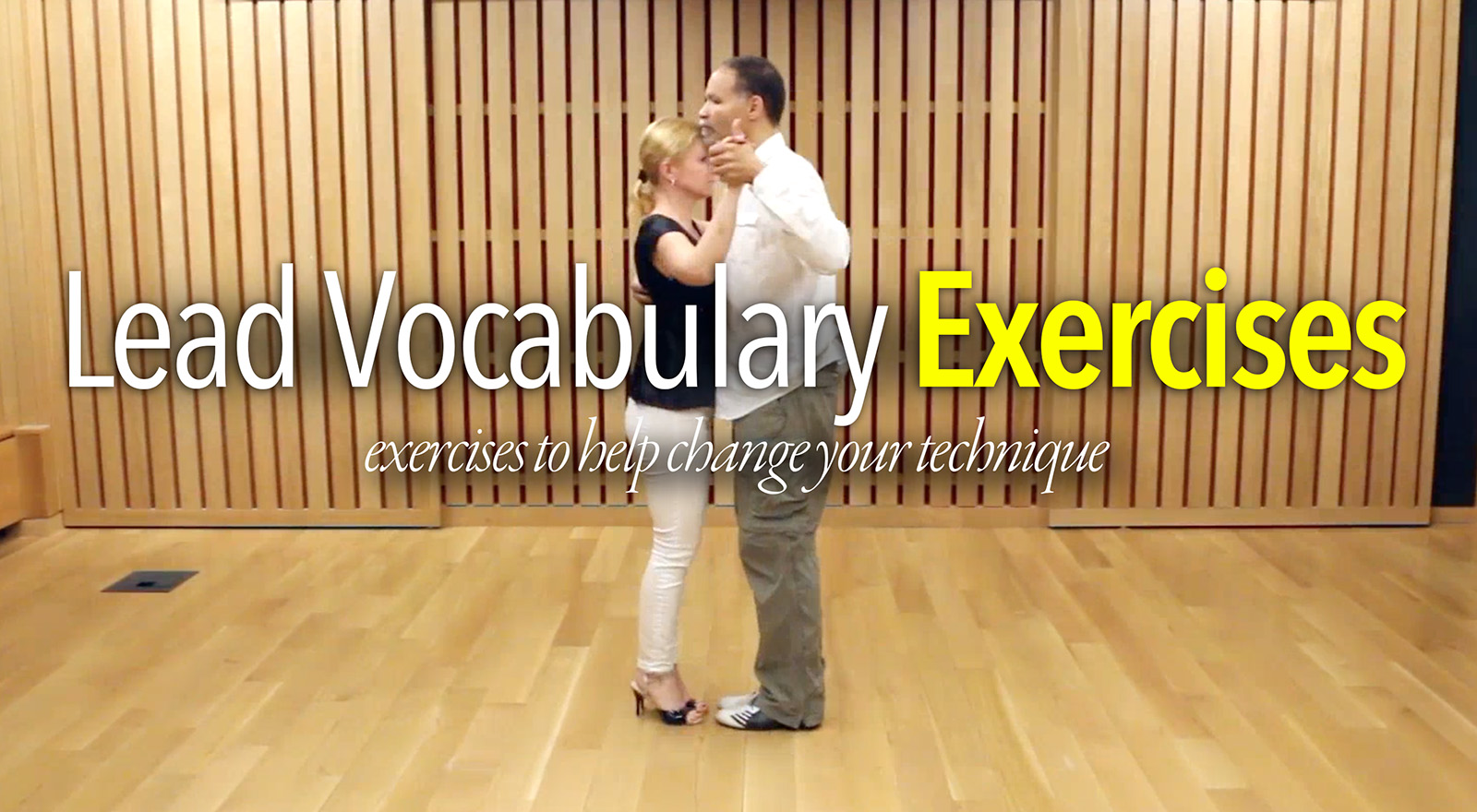Most Leads come to the dance floor with the idea in their head of what they’re going to do from the moment they come into the Embrace. This is not always true, but a good portion of the Salon, Marathon, and Encuentro Leads will already have the first few bars of music mapped out. While their dance is not entirely mapped out (tsk, tsk, tsk), the first few measures are, and this is based on the Neurology of Leading that they’ve trained themselves to do over time with experience. And from there they choreograph a dance on the fly that fits the music within the available space (again the Neurology of Leading). To the casual observer, they’re dancing fluidly. Seemingly effortlessly putting one idea behind another. However, in order to get to this stage of dancing seemingly takes a long time to do.
There is the traditional method of trial and error to achieve this way of dancing: Which is lots of endless classes/workshops on vocabulary that they’ll almost never use, to pieces of music that they’ll never hear again (thankfully), and then spending lots and lots and lots of time social dancing, and ‘practicing’ (ahem), and throwing in a few private lessons here and there for good measure, and hopefully coming out the other side a slightly improved competent social dancer, which speaks nothing to their embrace, interpretation the music, their ability to execute vocabulary, or attention to detail, or leaving their ego at the door. This is the norm of how things are done. This is ‘trial and error’ because the Lead tries things out and the results are pretty hit or miss most of the time for a variety of reasons that are nuanced to detail here (that’s another topic for another day). Also during this time period, the experience can be long, usually painful, ego-bruising process (if they’re lucky), that can take upwards of two to three years at minimum assuming travel, number of partners, distance to larger and multiple cities, level of diligence and attention to detail in multiple disciplines: Technique, Vocabulary, Musical Interpretation, Codigos, Marathon vs. Encuentro vs. Salon styles of dancing, and a host of other things with the end goal being not just a competent social dancer, but rather a competent social dancer that can freely and fluidly interpret the music with their partners, e.g. dancing fluidly.
What if we could shave off (to reduce by) a few months, maybe a year, this process, possibly cut it back to about 6 months entirely ? What if there were a series of stepping stones that could quite rightfully change how a Lead responds to the music, changes how they interpret the music, that reduces their inhibitions, their hesitations, and removes all repetition from their vocabulary choices, and removes any and all excessive usages vocabulary ? That’s where Today’s Tango Topic comes in.
There is another method that creates this series of stepping stones (no pun intended) to getting the Lead to a place where they can freely interpret the music, and freely choreograph their ideas that map their vocabulary onto the music so that it fits perfectly. These are Lead Exercises.
What is a Lead Exercise ? This is a series of linked vocabulary choices that are practiced with some frequency on a weekly basis within the construct of 2 different embrace ideas, as well as with a metronome and NOT a piece of music. The reason ? A piece of music has lots and lots of nuances that can and do throw most people off, it confuses the hell out of them. So rather than work with a specific piece of music, we work with a time signature independent of the musical nuances, or in this case…the beat and ONLY the beat with pauses every 4 or 8 notes. So put simply a Lead Exercise is not about technique in this case, but rather a series of exercises designed specifically to retrain your Leading mind to respond to the changing conditions of the floor, the changing or challenges of Leading someone, what to do next, and most importantly to fix that tiny little problem of the hesitation described below. At the same time, this series of exercise also solves two latter problems of repetition and too much vocabulary by pairing things back to simple constructs to start with, instead of complex vocabulary sequences. Which is all designed to force you to work on the transitional elements rather than remembering steps, patterns, and figures that often fail and don’t necessarily help you all that much.

About The Video. This video comes in at 21m:40s in length in 9 Sections. Lead Technique is explained here in the video. No Follower technique is explored.
Section 1 – Introduction – 00:03:04
Section 2 – Walking Into Lazy Ochos – 00:01:35
Section 3 – Walking Into Lazy Ocho – The Other Side – 00:02:05
Section 4 – Walking Into Traveling Ochos – 00:00:48
Section 5 – The ‘Dropped’ Traveling Ocho – 00:01:03
Section 6 – The Close Embrace Variations – 00:02:59
Section 7 – The ‘Practiced’ Weight Change – 00:00:38
Section 8 – The 3rd Cross System Entry – Lead Cross Behind – 00:04:05
Section 9 – The Frequencies/Closure – 00:04:42
Video pre-requisites: 1.) 6 Ways of Walking. 2.) Milonguero Ochos. 3.) Traveling Ochos. 4.) The 5 Pause Types!

